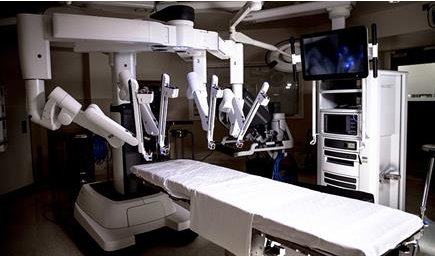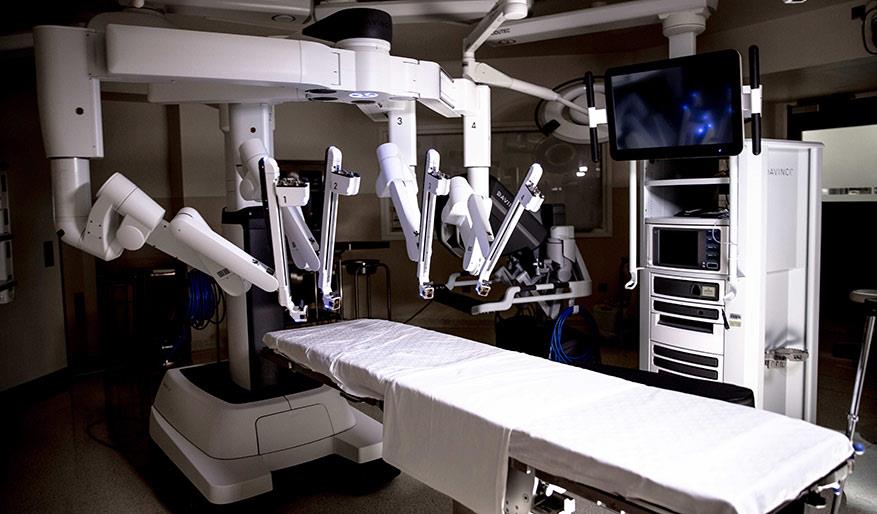Our Doctors
Meet all the doctors from Cleveland Clinic Abu Dhabi.
View Doctors
Robot assisted surgery offers better surgical outcomes for patients

Surgical robots have been used to assist in surgery for several decades, but major advances in technology in recent years have completely transformed the way surgeons perform surgery, and how patients recover.
The use of surgical robotics allows surgeons to perform complex procedures with more control, precision and flexibility than ever before.
When we think of robots, we might imagine machines that have been developed to replace humans. In medicine, this isn’t the case. Robotic surgery doesn’t replace the role of the surgeon, it is a way of enhancing their skills. A surgeon controls the use of instruments using robotic arms, which are guided via a console. Four arms operate simultaneously, one with a camera, two acting as the surgeon’s hands and one to assist. The surgeon controls the procedure via a control system, using his hands and feet. This controls the robotic arms, which are attached to very precise instruments, allowing the automated surgery to operate through much smaller incisions. The camera provides a highly magnified image on a high-definition monitor, with a more detailed, 3D images than the naked eye could provide.
Systems such as the da Vinci Surgical System used at Cleveland Clinic Abu Dhabi have revolutionized the use of robotic surgery. Surgeons can perform the most intricate and complex operations in minimally invasive ways. And when operations are less invasive, they have fewer complications associated with them.
Key benefits of robotic surgery
Robotic surgery can be used for many surgical procedures, which would traditionally be major operations. This includes, heart, abdominal, bariatric (weight loss), colorectal, gynecological, and urological surgeries. While some patients may be a little apprehensive about the thought of a robot operating on them, remember that the surgeon is in control the entire time, with their movements translated to the more controlled movements of the robotic instruments. If you have surgery planned, talk to your doctor to see if robotic surgery could benefit you.